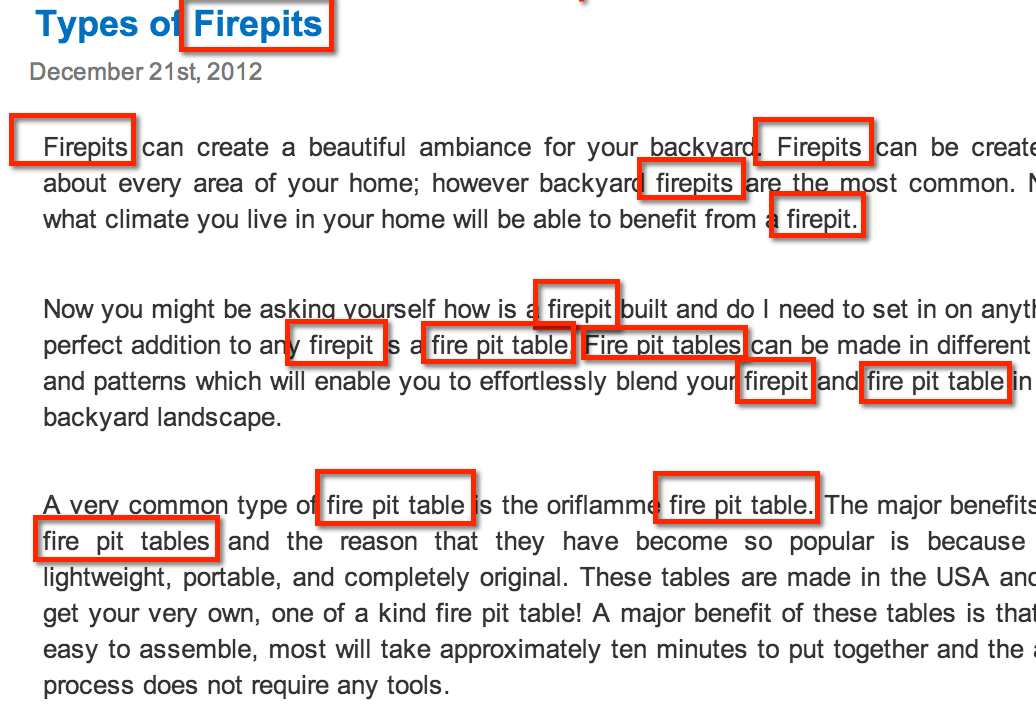Keyword stuffing, or the practice of shoving as many seo keywords onto a page as physical possible, has long been the bane of SEO white hats everywhere.

Keyword stuffing is the art of packing keywords into your site even when it’s not making any sense anymore.
It greatly lowers user-friendliness and information reputation and quality of your site in exchange for a temporary increase in rankings. While this is something that Google can sniff out much faster nowadays, it is still very likely that users can encounter this issue.
While it is important for keywords to get ranked, it is also equally important to ensure that the content you would be writing comes off as natural and informative instead of something that would only generate a temporary spike in traffic.
There was a time when the method of stuffing worked as well on a webpage as it does in a turkey. Back in the early years of search engines, one could easily manipulate a page’s ranking on Google’s SERP with keyword stuffing.
Sites could rank on a large variety of keywords by simply cluttering them onto a page, even if the keywords were unrelated and the site was absent of any real content.
You could be (somewhat) classy about it by hiding the offending keywords, matching their text color to the background color, or you could just be blatantly obnoxious.
Keyword Stuffing vs. Responsible Keyword Optimization
It’s essential to differentiate keyword stuffing from general keyword usage. It’s still really important to use your keyword in your content, so don’t let all this Google will eat your brains and destroy your home if you do keyword stuffing talk frighten you away from responsible keyword insertion.
Like so many things in life, keywords need to be used in moderation. Some other things that rely heavily on moderation:
- Cookie dough: A little bit is like an everlasting gobstopper, too much makes you feel sick. (And could even kill you. Salmonella poisoning anyone?)
- Sunshine: Vitamin D or 3rd degree burn victim? You decide.
Simply focus less on the robo-crawling-spider-bots and focus more on people. You know, the ones who will actually be looking at your site. Create information-rich content that uses keywords appropriately and in the proper, well-to-do fashion. Would Downton Abbey’s Dowager Countess keyword stuff? Not likely. It’s simply not done in proper society.
How to Insert Keywords Safely: Walking the Fine Line
So how do you use keyword responsibly?
Some say there is no magic number. Others say there is a magic number: 2-5% keyword density is considered safe by most.
Instead of using the same keyword a hundred and one times, try using some long-tail keyword variations to spice things up a bit in your content and help you hit that keyword density sweet spot.
Another tip is to try implementing synonyms (various words with the same meaning). Search engines recognize that words like “bat” are homonyms; they are words that have multiple meanings. Google prides itself on relevancy, so they want to be able to differentiate someone searching for a baseball “bat” vs. a flying vampire “bat.” For this reason, there’s a database index of Google synonyms to help it differentiate between word meanings. Google knows that if a site is talking about “clubs” and “bats,” they are probably talking about sports equipment and not flying mammals.
Because synonyms help Google stay relevant, they tend to reward sites that implement them. Having a variety of related words also means that your site is more likely to have crafted content of real value rather than meaningless drivel meant to trick search engines, which gives Google another reason to add weight to synonyms.
